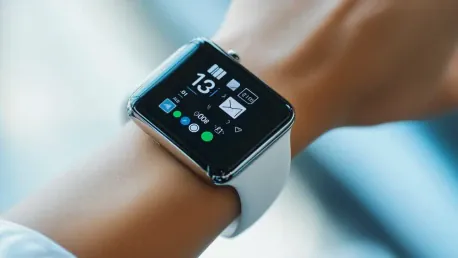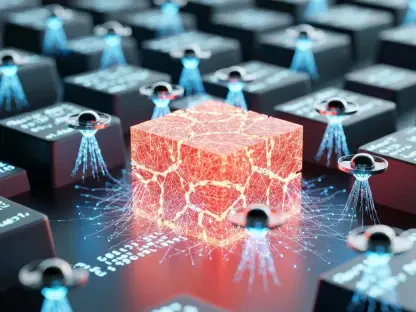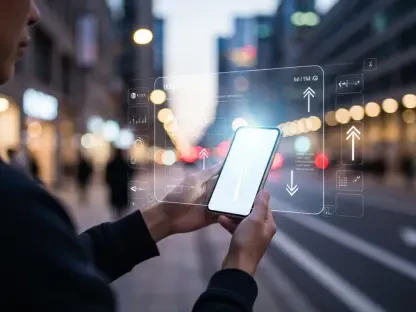As we approach mid-decade, significant advancements in technology are poised to enhance efficiency, connectivity, and sustainability in our daily routines. The future promises smarter homes, cutting-edge wearable devices, next-gen communication tools, and various eco-friendly tech solutions, all integrated seamlessly into our lives. This article delves into the key themes, trends, and considerations that will shape the tech landscape in 2025.
The Rise of Wearable Technology
Advanced Health and Fitness Monitoring
Wearable technology is rapidly transforming personal health and fitness monitoring. Future smartwatches and fitness trackers will feature advanced biometrics, including glucose monitoring and heart rate variability analysis, allowing for precise health management. These devices will become crucial companions in managing individual health, providing non-invasive treatment options and real-time exercise adjustments based on user data. Emerging tools like infrared therapy belts are designed to support pain relief and recovery, offering new levels of comfort and care. Furthermore, wearable tech advancements aim to empower users to track their health metrics more intimately, leading to a proactive approach to wellness.
The significance of wearables extends beyond mere tracking; these devices will enable early detection of potential health issues by monitoring critical data points continuously. As such, the integration of advanced sensors and algorithms into these devices offers unprecedented insights into personal health, predicting concerns before they become serious. This health monitoring evolution signifies a shift towards a more holistic and proactive healthcare model. These tools will not only assist users in understanding their physical conditions but will also collaborate with healthcare professionals by providing accurate, real-time health data tailored to individual needs.
AI Integration in Wearables
The integration of AI in wearables is making them essential in providing customized healthcare. AI-driven fitness bands will craft personalized exercise and wellness plans, adjusting routines in real time to ensure users can maintain optimum health with minimal lifestyle disruption. Novel tools such as infrared therapy belts, designed for pain relief and recovery, are also emerging, further enhancing the role of wearables in daily life. The synergy between AI and wearable technology allows for smarter, more responsive devices that evolve with the user’s needs, promoting a healthier and more balanced lifestyle.
Moreover, AI integration extends to mental wellness through wearables capable of tracking stress levels, sleep patterns, and emotional states. By employing sophisticated algorithms, these wearables can offer meditation exercises, breathing techniques, and other interventions tailored to the individual’s current state. This advancement reflects a broader understanding that health encompasses both physical and mental well-being. Wearables equipped with AI are not only accessories but also vital tools that help users maintain a comprehensive, balanced approach to their overall wellness.
AI-Powered Devices and Assistants
Enhanced Daily Interactions
AI-driven gadgets are expected to significantly enhance daily interactions. Virtual assistants will benefit from improved natural language processing, resulting in smoother communication. Smart speakers and hubs, integrated with AI, are extending functionalities to automate tasks like home security, shopping, and entertainment, making household management easier. The engagement of AI in these devices provides an intelligent, responsive interaction, marking a move towards more intuitive and user-friendly gadgets that simplify daily life.
These virtual assistants will also learn from user behavior, becoming more adept at anticipating needs and preferences over time. This personalized interaction framework means that AI-driven devices can provide recommendations for optimizing energy use, managing schedules, and even suggesting meal plans based on dietary preferences and health goals. As a result, the convenience and efficiency of daily tasks will be significantly elevated, allowing individuals to focus more on their personal and professional endeavors without constant manual management of their tech environments.
Intelligent Household Management
AI-powered robotic vacuums and personalized cooking aids are set to streamline household routines. These devices employ intelligent suggestions and predictive analytics to optimize tasks, ensuring a more efficient and convenient living environment. AI technology enhances the functionality of these household gadgets by allowing them to learn from their surroundings and adapt their operations accordingly. For instance, robotic vacuums can map the house, identifying the most frequented areas that require frequent cleaning, thus maximizing their efficiency.
In addition to cleaning, AI-driven cooking aids will revolutionize kitchen dynamics by providing step-by-step cooking instructions tailored to user preferences and dietary restrictions. These sophisticated kitchen devices will offer intelligent recommendations based on what ingredients are available and suggest balanced meal plans. AI systems embedded in these tools can adjust cooking times and temperatures to ensure perfect results, taking the guesswork out of meal preparation. By integrating AI into various household functions, smart home environments will offer unprecedented levels of convenience, enhancing the quality of life for users.
Evolution of Smart Homes
Efficient, Self-Regulating Ecosystems
Smart homes are evolving into highly efficient, self-regulating ecosystems. Advanced IoT devices will enable dynamic lighting, smart thermostats, and better appliance controls, optimizing utility consumption by adapting to user behavior. Interconnected smart hubs will create seamless living spaces where various devices communicate to enhance convenience and safety. The adoption of such technologies aims to transform homes into environments that are not only responsive to user needs but also environmentally conscious.
Moreover, these IoT-enabled devices will allow homeowners to monitor and control their home environments from anywhere, ensuring optimal energy use whether they are at home or away. For example, smart thermostats can adjust heating and cooling based on current weather conditions and occupancy, reducing unnecessary energy consumption. Smart lighting systems can also adapt to natural light levels, providing appropriate illumination while conserving power. Such interconnected ecosystems contribute to more sustainable living by minimizing waste and promoting efficient use of resources.
AI-Enabled Security Systems
AI-enabled security systems will play a crucial role in smart homes. Facial recognition doorbells and adaptive surveillance systems will provide heightened household protection, ensuring a safer living environment. These advanced systems utilize AI to detect and respond to potential threats in real time, offering an additional layer of security and peace of mind for homeowners. By employing machine learning, these systems can distinguish between familiar faces and unknown individuals, reducing false alarms and increasing overall effectiveness.
Furthermore, AI-driven surveillance can analyze patterns to identify unusual activities, sending alerts to homeowners and authorities as needed. This proactive approach to security ensures rapid response to potential risks, enhancing safety within the home environment. In addition, AI integration within security systems extends to smart locks that can be controlled remotely, allowing users to manage access even when they are not physically present. Such technologies are set to redefine home security, making intelligent, proactive systems an integral part of smart home ecosystems.
Transforming Daily Routines: Health, Communication, and Sustainability
Health and Fitness Innovations
The 2025 tech landscape promises significant improvements in health and fitness monitoring. Wearable devices will track more detailed metrics like blood oxygen levels and ECG data, permitting users to oversee their health proactively. Innovations like therapeutic infrared belts offer non-invasive treatment options for chronic conditions, ensuring users can maintain optimum health with minimal lifestyle disruption. These advanced wearables will act as personal health companions, providing real-time updates and alerts on potential health concerns and lifestyle adjustments.
Moreover, the ability to continuously monitor health metrics enables early detection and intervention, which is crucial for managing chronic diseases and preventing severe health conditions. Wearables integrated with AI can offer personalized guidance based on the collected data, suggesting specific actions or lifestyle changes to improve overall well-being. The real-time feedback from these devices ensures that users can make informed decisions about their health, fostering a proactive and preventive approach to personal wellness.
Next-Gen Communication Tools
Communication tools are evolving to support ultra-connectivity and enhanced interactions. AI-powered earbuds will enable real-time transcription, facilitating seamless multilingual communication. Virtual reality (VR) headsets will create immersive environments for remote meetings, bridging physical distances and enriching user experience with interactive applications. These transformative tools will bring new dimensions to how we connect and collaborate, making global communication more accessible and efficient.
Future smartphones may include holographic displays, enabling users to interact with 3D content in real-time and making video calls more lifelike. VR headsets with higher resolution and advanced haptic feedback will provide immersive experiences, whether for professional meetings, virtual travel, or gaming. Additionally, AI-driven features in these communication devices will assist in real-time language translation, making it easier to interact with people from different linguistic backgrounds. The evolution of communication tools represents a significant leap towards more inclusive and dynamic global interactions.
Eco-Friendly Tech Solutions
Eco-friendly tech solutions are transforming device functionality to prioritize sustainability. Innovations like smart thermostats are designed to reduce energy waste by adapting to user behavior, whereas solar-powered chargers replace traditional options, promoting greener lifestyles. IoT-connected home systems will monitor and suggest actionable steps for energy conservation, ensuring a reduction in environmental impact while maintaining high performance of household utilities.
Incorporating sustainable features into everyday tech gadgets aims to minimize carbon footprints significantly. For instance, smart appliances that adjust their power usage based on real-time energy grid demands contribute to lowering overall energy consumption in homes. Solar chargers and battery storage solutions will enable users to harness renewable energy, reducing dependency on non-renewable power sources. By integrating these eco-friendly technologies, future homes will not only be smarter but also more responsible stewards of environmental resources.
Industry Game Changers: AR, VR, and Autonomous Mobility
AR and VR Technologies
The revolutionary potential of AR and VR technologies is immense. Advanced AR glasses will provide real-time overlays useful for navigation, gaming, and professional tasks, while VR headsets will offer higher resolution and haptic feedback for lifelike interactions. These technologies have applications in industries such as education and healthcare, from immersive learning environments to remote surgical procedures, transforming how we learn and experience various aspects of life.
In the educational sector, AR and VR will create interactive and engaging learning environments, making complex concepts easier to grasp through virtual simulations and 3D models. In healthcare, VR can be used for training purposes, allowing medical professionals to practice surgical procedures in a risk-free environment. Furthermore, AR glasses can assist surgeons by providing real-time data overlays during operations, enhancing precision and outcomes. The broad applicability of AR and VR technologies is set to revolutionize multiple industries by introducing dynamic, immersive experiences that enhance efficiency and learning.
Autonomous Vehicles and Personal Mobility
Autonomous vehicles and personal mobility solutions represent another groundbreaking trend. Fully autonomous vehicles are gaining traction in urban areas, promising safer and more energy-efficient travel. Electric-powered mobility tools, like e-scooters and drones, will offer sustainable options for short commutes, while AI-driven traffic management advancements will improve convenience and reduce operational risks. These innovations are paving the way for smarter, greener cities with enhanced accessibility and reduced environmental impact.
As autonomous vehicles become more prevalent, they will significantly reduce traffic congestion and lower the risks associated with human error in driving. Integrating AI into traffic management systems will facilitate smoother traffic flow, optimizing route planning and reducing travel time. Moreover, electric mobility options will contribute to reducing urban air pollution and dependence on fossil fuels. The advent of these autonomous and electric mobility solutions is crucial for the development of sustainable urban environments where mobility is efficient, safe, and eco-friendly.
Challenges and Considerations in Adopting New Technologies
Privacy and Security Concerns
Despite the promising advancements, adopting these new technologies comes with challenges, particularly regarding privacy and security. As smarter gadgets collect substantial personal data, the risk of data breaches, unauthorized access, and misuse becomes significant. Devices processing sensitive information, like AI assistants, wearable health trackers, and smart home systems, must employ robust security features and transparent privacy policies to safeguard user data. Ensuring these measures are in place is essential to build trust and protect users from potential vulnerabilities.
The challenge lies in developing security protocols that are both effective and user-friendly. End-to-end encryption, regular updates, and robust authentication methods are some components that should be integrated into these devices to ensure data integrity. Furthermore, companies must be transparent about their data collection processes and provide users with control over their information. Engaging in ethical practices and adhering to regulations will be critical in addressing privacy and security concerns as technology continues to evolve.
Balancing Convenience with Sustainability
As we approach the middle of this decade, we are on the brink of experiencing remarkable advancements in technology that are set to revolutionize our daily lives by boosting efficiency, enhancing connectivity, and fostering sustainability. The future promises a variety of innovations, ranging from smarter homes equipped with the latest in automation, to groundbreaking wearable devices that monitor health and activity, and next-generation communication tools that will facilitate seamless interaction. Additionally, an array of eco-friendly technological solutions is anticipated to be integrated into our routines, aiming to reduce our environmental footprint.
This article explores the key themes, trends, and considerations that are expected to dominate the technological landscape by 2025. We will examine how these innovations will not only transform our day-to-day activities but also contribute to a more connected and environmentally conscious world. By understanding these developments, we can better prepare for the exciting changes ahead in the realm of technology and its impact on our lives.









